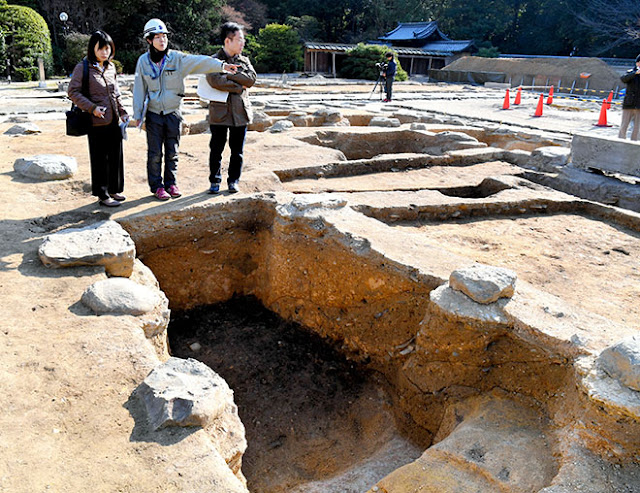A kiln apparently used to bake tiles for the roof of Toshodaiji temple, a UNESCO World Heritage Site here, offers new hints into the craftsmanship that went into creating the magnificent structures more than 1,000 years ago.
 |
| Remains of a tile kiln unearthed from the grounds of Toshodaiji temple in Nara [Credit: Kazushige Kobayashi] |
Remains of the kiln, measuring 4.2 meters by up to 2.2 meters, were excavated from under the “mieido” building north of the center of the temple.
 |
| The kiln is thought to have been 4.2 meters long and up to 2.2 meters wide [Credit: Kazushige Kobayashi] |
“Toshodaiji is not a large publicly commissioned temple, so those facilities could have been erected gradually over dozens of years.”
 |
| Tiles for the roof of Toshodaiji temple's “kondo” main hall are believed to have been baked here [Credit: Kazushige Kobayashi] |
Building work at the temple site apparently continued after Ganjin died. While the record remains murky, it is said that the east pagoda built in 810 is the most recent addition to Toshodaiji.
Author: Yuya Tanaka | Source: The Asahi Shimbun [March 12, 2018]
